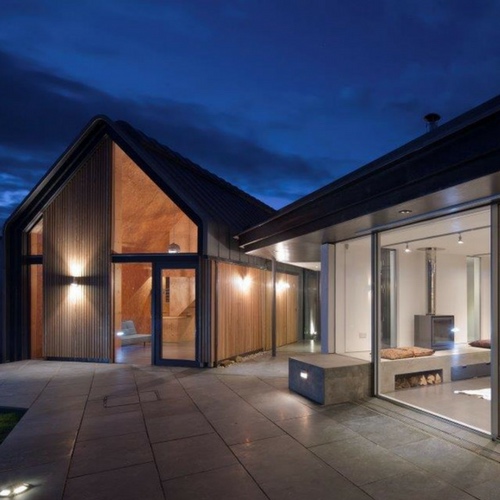Scotland Historical Places
From castles steeped in history to locations from our favourite period dramas, there are plenty of Scotland historical places to visit. Take a trip up the tower at Elgin Cathedral for rooftop perspective and open views over the city.
Or discover a collection of intricately carved Pictish symbol stones in St Vigeans Museum near Arbroath. For a deeper understanding of Scotland's turbulent past head to the site where Bonnie Prince Charlie raised his father’s standard in 1745.
Bannockburn
Bannockburn marks the site of one of Scotland’s most important historical battles. Here, in June 1314, Robert the Bruce’s army defeated the largest English army to ever invade the country. The victory clinched Robert’s status as King of Scots, and it changed the course of Scottish history forever.
The battle was the culmination of years of planning by Robert the Bruce and his knights. As the Middle Ages progressed, it became clear that a mounted knight alone could not win a battle against an overwhelming force. The failure of the English to capture the castle at Charleroi, Crecy and Agincourt further illustrated this point. To overcome this weakness, Edward developed his “system of occupation.” This was a series of stone castles or walled towns occupied by a small, armed force of local or English knights who would be loyal to him.
At Bannockburn, Robert commanded an army of about 18,000 men. Late on 23 June, the vanguard of the English army, led by Sir James Douglas, came to the ford over the Bannock Burn a couple of miles south of Stirling. On the far side, a Scottish army under the command of Robert the Bruce waited for them.
The visitor center at the battlefield, completed in 2014 for the 700th anniversary of the Battle, explains how this monumental event happened. Although there are few actual artefacts, the center uses some very impressive 3D technology to put visitors face-to-face with medieval warriors and witness the tactics of two opposing kings. The experience is a must for any serious student of Scottish history. The memorial park also includes the iconic statue of Robert the Bruce on his beloved steed.
Culloden Battlefield
For over 275 years, visitors have made their way to Culloden Battlefield to experience the last pitched battle on British soil. The 1745 Jacobite Rising came to a brutal end here on the misty moor as rebels faced off against British government troops in one of the most harrowing conflicts in history.
The National Trust for Scotland operates this historic site with a visitor centre and museum that helps to convey the historical context of the battle. They also have a number of clan markers throughout the grounds, which allow you to connect with your Scottish ancestors and pay respect to those who lost their lives in the fight. The site has seen an increase in popularity due to its appearance on the Outlander series where it is a backdrop for scenes between Claire and Jamie.
While the National Trust’s museum and exhibitions are excellent, the best part of the visit comes when you head out onto the battlefield itself. You can follow the battle lines on foot, marked with red and blue flags, which indicate the lines of Loyalist English soldiers and Jacobites respectively.
Culloden Battlefield has been awarded Gold in the VisitScotland Green Tourism Scheme and is committed to preserving its heritage for future generations. The site prioritizes sustainable practices, focusing on eco-friendly initiatives and reduced carbon emissions to ensure that this special place remains intact for future visitors. They are also a member of the International Council of Monuments and Sites, which is dedicated to preserving cultural heritage worldwide. This is a must-see stop on any road trip through the Scottish Highlands and for anyone interested in Scottish history. Be sure to make a reservation for your tour ahead of time as the site does get crowded at peak times.
Fort George
One of the most outstanding artillery fortifications in all Europe, Fort George is colossal and awe-inspiring. It took 22 years to build and was designed as an impenetrable base for King George II’s army after the defeat of the Jacobites at Culloden. But by the time it was completed, the threat of another Jacobite rebellion had all but disappeared. The Fort remains in use as a military barracks today, and it’s open to visitors who can explore a vast area of rampart that spans more than a mile and encompasses 42 acres.
The fort was designed in a star-like shape and the walls, made of hard local stone, are up to 12 meters thick. Its landward sides were defended with a series of bastions, while the seaward side was protected by long stretches of rampart and smaller bastions that could be manned to repel a potential attack. The fort was also used as a training base and recruiting depot, and many a Highland lad passed through its gates on his way to fight for the British Empire around the world.
Throughout the year, Fort George hosts a range of reenactments and demonstrations, giving you an unforgettable glimpse into Scotland’s history. From musket-firing shows to mock battles, the fort is an immersive experience that will leave you with a greater appreciation of the country’s rich heritage.
Several tours of the fort are available, and a convenient audio guide will help you find your way. Several of the buildings in the fort are also home to the Official Highlanders Regimental Museum, which provides a fascinating insight into the development of the Scottish regiments from their origins as clan-based militias through their amalgamations with other British forces and the gradual expansion of the regiments to global prominence.
Aberlemno Stones
Aberlemno Stones are a series of carved Pictish standing stones. The best-known, the cross slab in the kirkyard, is considered one of the finest examples of Dark Age sculpture in Europe. The front displays a fine cross and intricate interlace decoration while the side facing the church shows a battle, thought to depict events at the Battle of Nechtansmere in 7th Century Scotland. This battle saw the defeat of the arrogant King Ecgfrith by Pictish leader Bridei Mac Bili and halted the expansion of the Anglo-Saxon kingdoms northwards.
But another stone, buried in a farmer’s field near Aberlemno, Angus, is believed to tell a different story. Archaeologists stumbled upon the uncovered symbol stone while conducting surveys of the area as part of the Leverhulme-funded Comparative Kingship project. Using imaging equipment they spotted anomalies in the ground that looked like signs of a settlement. When they dug a small test pit they found the stone.
The surviving side of the stone shows a magnificently detailed depiction of a battle between men with long hair and helmeted soldiers. The carving moves like a cartoon, from the initial engagement through to the death of one of the protagonists. It’s thought the scene may commemorate the Battle of Nechtansmere – also known as Dun Nechtain or Dunnichen – which took place in 685 AD some 10 km south of Aberlemno at the village of Dunnichen. The victory was celebrated by the inscription on this stone and effectively ended the Anglian occupation of southern Pictland.
The stone is similar in size and proportion to the Kirkyard cross-slab, but with a more elongated shape. The sides of the stone display more symbols, with the better-preserved front showing a double-disc, z-rod, mirror and comb symbol while the back features a hunting scene. Its closest artistic analogies are probably the Hilton of Cadboll stone in Easter Ross, which displays a similarly elaborate hunting scene.
Loch Ness
The mighty loch of Nessie is one of Scotland's historical places where monsters, myths and legends meld with vast, ancient landscapes. A visit to the Highlands wouldn't be complete without a visit to this legendary body of water.Dundee Web design
The word Nessie is synonymous with the idea of a plesiosaur-like creature that may lurk in the dark waters. The loch has become one of the most famous tourist attractions in the world, thanks to several sightings over the years.Website design Dundee
Nessieland, a local attraction, explores the loch's geology and its legendary inhabitant through state-of-the-art multimedia exhibits. Visitors also can enjoy a trip along the loch's shore, which offers picturesque views. A walk through Urquhart Castle, a medieval castle, is another must-do activity. This castle was once the home of the Pictish, a tribe that left behind many carved stone standing stones throughout northern Scotland. The Picts were skilled artists, and their depictions of animals are remarkably lifelike. One depiction of a strange beast, however, stands out as particularly uncanny.Glenrothes airport transfers
This odd-looking animal features an elongated head locket, a spout and flippers instead of feet. It was carved on a Pictish rock in the first century A.D. and is the earliest known evidence of an idea that has held sway in the Scottish Highlands for 1,500 years – that Nessie is an aquatic monster.Airport transfers Glenrothes
There's enough water in the lake to submerge every person on earth three times over, so there's plenty of space for a plesiosaur (or whatever). Just outside of Drumnadrochit is Divach Falls, a beautiful waterfall surrounded by oak woodland. Also nearby is the Corrimony Chambered Cairn, which offers a glimpse into Scotland's prehistoric past.



Comments
Post a Comment